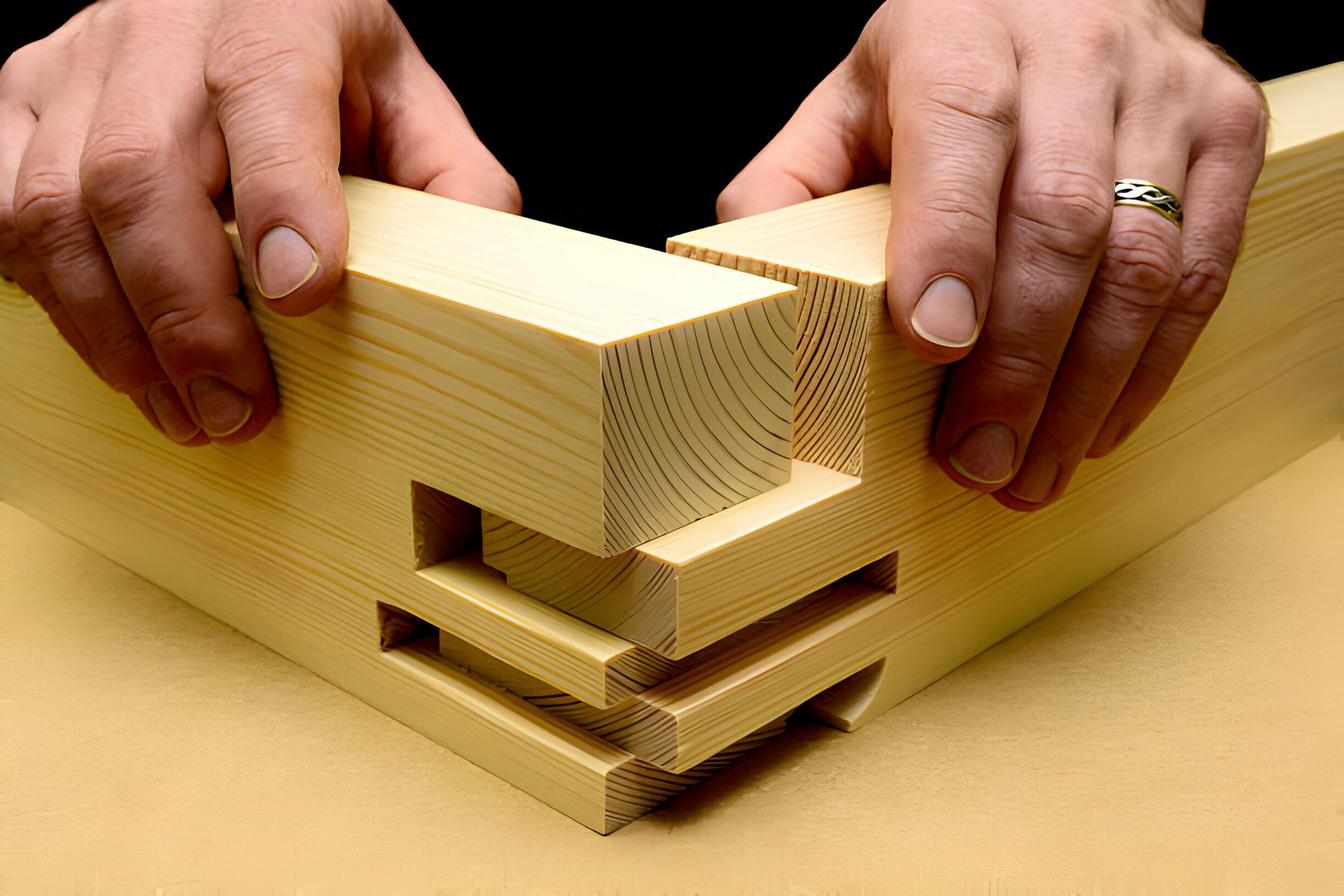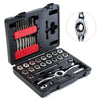
Wood Characteristics: A Guide to Hardwoods vs. Softwoods
Embarking on a DIY project can be an exhilarating experience, but choosing the right wood species is crucial for the success and longevity of your creation. The world of woodworking offers a vast array of options, each with its unique characteristics and suitability for different applications.
In this guide, we will explore the fundamental aspects of wood characteristics and delve into the differences between hardwoods and softwoods to help you make informed decisions for your next DIY venture.
Understanding Wood Characteristics
Wood is a versatile and dynamic material, and its characteristics play a pivotal role in determining its suitability for specific projects. Before diving into the distinctions between hardwoods and softwoods, let's explore the key features that define wood species.
Grain Patterns
- The grain pattern of wood refers to the alignment of fibers within the material. It significantly influences the appearance of the finished product. Hardwoods, such as oak and mahogany, typically exhibit a more complex and pronounced grain pattern, adding visual interest to furniture and other projects. Softwoods, like pine and cedar, often have a more subtle and straight grain.
Density
- Wood density is a critical factor that affects the durability and strength of your DIY creation. Hardwoods, being denser than softwoods, are generally more robust and resistant to wear and tear. This makes them ideal for projects that require longevity and durability, such as flooring or outdoor furniture.
Color Variations
- The natural color of wood varies widely among different species. Hardwoods like cherry or walnut often showcase deeper, richer tones, while softwoods like pine and fir tend to have a lighter appearance. Understanding the natural color variations can help you choose a wood species that complements your desired aesthetic.
Workability
- The ease with which wood can be worked is an essential consideration for DIY enthusiasts. Some woods are more pliable and easier to manipulate, making them suitable for intricate projects. Softwoods are generally easier to work with due to their lower density, while hardwoods may require more effort but result in a polished and refined finish.
Moisture Resistance
- The ability of wood to resist moisture is crucial, especially for projects exposed to varying environmental conditions. Hardwoods, with their tight grain structure, often have better moisture resistance than softwoods. This makes them suitable for applications such as kitchen cabinets or bathroom furniture, where exposure to moisture is common.
Hardwoods vs. Softwoods: Decoding the Differences
Now that we've covered the basic characteristics of wood, let's delve into the distinctions between hardwoods and softwoods. Contrary to what the names might suggest, the classification is not solely based on the wood's hardness. Instead, it is rooted in the reproductive features of the trees from which the wood is derived.
Hardwoods
Hardwoods come from deciduous trees, which are characterized by their broad leaves and typically shed them in the autumn. This category includes popular species such as oak, maple, mahogany, and cherry. Here are some key attributes of hardwoods:
Density and Durability
- One of the primary characteristics that set hardwoods apart is their high density. This density contributes to the wood's durability, making hardwoods suitable for high-traffic areas and projects that require strength and resilience.
Grain Patterns
- Hardwoods often boast intricate and visually appealing grain patterns. This makes them an excellent choice for projects where aesthetics play a significant role, such as fine furniture or cabinetry.
Cost
- Hardwoods tend to be more expensive than softwoods due to their slower growth rates and increased density. However, their durability and aesthetic appeal justify the higher cost for many DIY enthusiasts.
Common Applications
- Hardwoods are commonly used for a variety of high-quality applications, including flooring, furniture, cabinetry, and decorative items. Their versatility makes them a popular choice among seasoned woodworkers.
Softwoods
Softwoods, on the other hand, come from coniferous trees, which typically have needles and bear cones. Pine, cedar, spruce, and fir are common examples of softwood species. Here are some key attributes of softwoods:
Density and Workability
- Softwoods are less dense than hardwoods, making them easier to work with, cut, and manipulate. This quality makes softwoods suitable for a wide range of DIY projects, especially for beginners or those looking for a more straightforward woodworking experience.
Grain Patterns
- Softwoods generally have a straight and less pronounced grain pattern compared to hardwoods. While this may be less visually striking, it can be advantageous for projects that require a more uniform appearance.
Cost
- Softwoods are generally more affordable than hardwoods due to their faster growth rates and lower density. This makes them an economical choice for large-scale projects or when budget constraints are a consideration.
Common Applications
- Softwoods find applications in various projects, including framing, construction lumber, outdoor furniture, and DIY projects where cost-effectiveness and workability are key factors.
Popular Wood Species for DIY Projects
To assist you in making an informed decision, let's explore some popular wood species for DIY projects and the specific characteristics that make them suitable for various applications.
Oak
Oak is a hardwood known for its strength, durability, and distinctive grain patterns. It is a versatile wood that is commonly used in furniture making, flooring, and cabinetry. Red oak offers a slightly lighter color, while white oak has a warmer, golden hue. Oak's durability makes it an excellent choice for high-traffic areas.
Maple
Maple is another hardwood prized for its durability and light color. It has a fine, uniform grain that works well in modern or contemporary designs. Maple is often used for furniture, cabinets, and kitchen accessories. Its smooth texture allows for an even finish, making it a favorite among woodworkers.
Mahogany
Mahogany is a luxurious hardwood known for its rich, reddish-brown color and straight grain. It is often used in high-end furniture and woodworking projects, providing an elegant and timeless finish. Mahogany's natural resistance to decay and insects makes it suitable for both indoor and outdoor applications.
Pine
Pine is a softwood that is widely available and budget-friendly. Its light color and straight grain make it suitable for a variety of DIY projects, including furniture, shelving, and interior trim. Pine is easy to work with, making it an excellent choice for beginners or those looking for a more forgiving wood.
Cedar
Cedar is a softwood known for its natural resistance to decay and insects. Its aromatic scent and reddish-brown color make it popular for outdoor furniture, decking, and fencing. Cedar's ability to withstand moisture makes it an excellent choice for projects exposed to the elements.
Cherry
Cherry is a hardwood prized for its rich, reddish-brown color that darkens over time. It has a fine grain pattern and a smooth texture, making it suitable for high-quality furniture, cabinets, and decorative items. Cherry is often chosen for its warm and inviting appearance.
Choosing the Best Wood for Your Woodworking Project
Choosing the right wood species for your DIY projects is a crucial step that significantly impacts the outcome of your efforts. By understanding the characteristics of different woods and the distinctions between hardwoods and softwoods, you can make informed decisions that align with your project's requirements and your woodworking skills.
Whether you're crafting a piece of furniture, installing flooring, or embarking on any other woodworking endeavor, the choice of wood plays a pivotal role in the project's success. Consider the durability, workability, aesthetics, and budgetary constraints to select a wood species that not only meets your project's needs but also enhances the overall appeal of your creation.
Remember, each wood species has its unique charm and attributes, so don't hesitate to experiment and discover the joy of working with different woods in your DIY adventures. Happy woodworking!



